Ranked: the world’s most exciting archaeological discoveries
History's most fascinating finds

Whether through thorough excavations or accidental discoveries, archaeology has unveiled a wide array of ancient civilisations, cultures and traditions across the globe. Buried beneath layers of time, the following artefacts and sites offer captivating glimpses into the world's past. We've ranked the most interesting archaeological finds of all time, ranging from the intricate ruins of Machu Picchu to the mysterious final resting place of an infamous English king.
Click through this gallery to explore the most exciting archaeological discoveries ever made...
30: L'Anse aux Meadows, Newfoundland and Labrador, Canada

This 11th-century outpost on Newfoundland’s northern tip is the site of the earliest known European settlement in North America – and the first and only site established by the Vikings on the continent too. L'Anse aux Meadows was discovered in 1960 by Norwegian explorer Helge Ingstad, and over the next eight years an international team unearthed building remnants and artefacts similar to those found in Norse Greenland and Iceland. The Vikings never conquered North America, but their exploration is recounted in the centuries-old Vinland Sagas.
29: Cave of Altamira, Spain

First discovered by a local hunter in 1868, this cave in northern Spain is now world-famous for its astonishing prehistoric paintings. In the 1870s a Spanish nobleman came to the cave to excavate the entrance, and, although he unearthed animal bones and stone tools, it was his eight-year-old daughter Maria who first spotted the bison paintings adorning the ceiling of a side chamber. It would be a while before prehistorians accepted that the 14,000-year-old artworks were genuine, as experts used to think that prehistoric peoples lacked the capacity for figurative art. Access to the original cave is limited, but visitors can examine a replica in a nearby museum.
28: Troy, Turkey
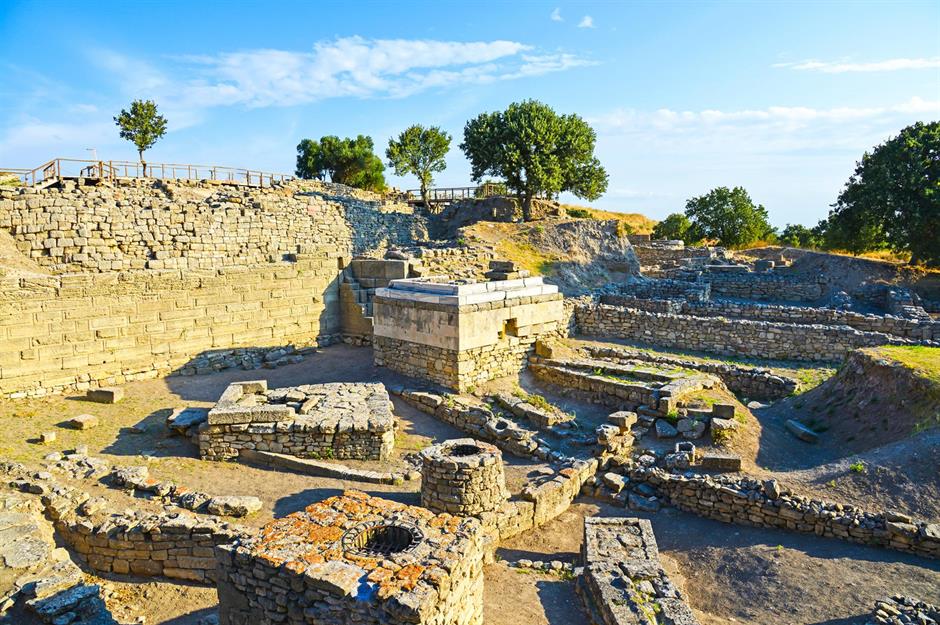
Troy (or Ilion) was made famous by Homer’s epic poem The Iliad, which recounts the semi-legendary Trojan War. In 1868, German adventurer Heinrich Schliemann oversaw an archaeological dig on Turkey’s Aegean coast, and became convinced he’d found Troy. He may well have found the city – it's hard to be certain – but his crude methods also destroyed centuries of Bronze Age evidence. Whatever the truth, the site he found contained the remains of not one but 10 settlements and 4,000 years of Trojan history. The site is revered for its significance in understanding the early development of Mediterranean civilisation.
27: Europe’s oldest lakeside village, Albania
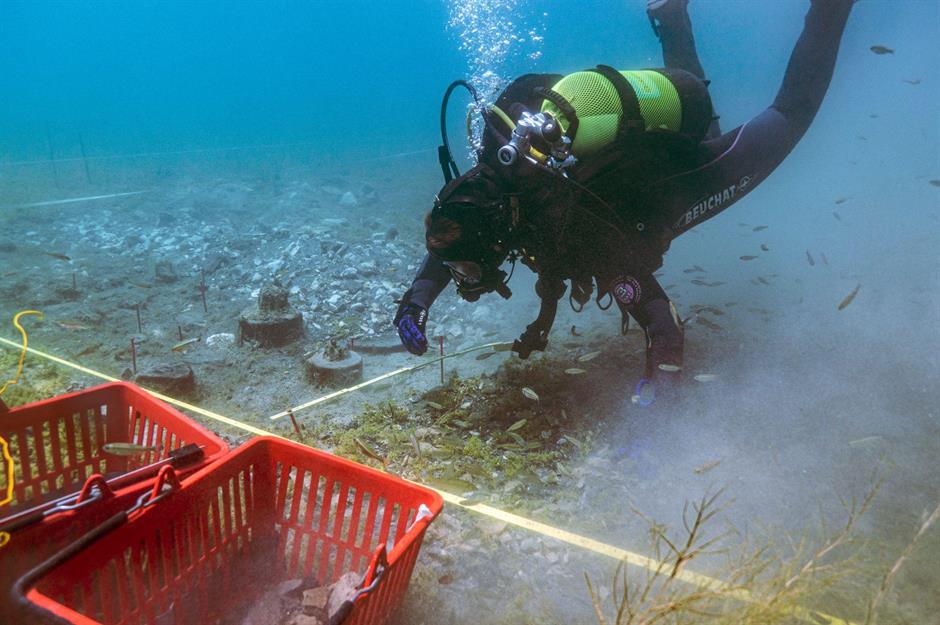
Straddling the North Macedonian-Albanian border lies Lake Ohrid, where in August 2023 archaeologists announced the suspected remains of an 8,000-year-old village. Hundreds of tree-trunk stilts were unearthed on the lakebed, which the team believe may have formed the foundations of prehistoric residences. "It is several hundred years older than previously known lake-dwelling sites in the Mediterranean and Alpine regions," explained excavation leader Albert Hafner, from Switzerland's University of Bern. If the dates prove to be conclusive, it would be the earliest known settlement of its kind anywhere in Europe.
26: Aztec Sun Calendar Stone, Mexico City, Mexico
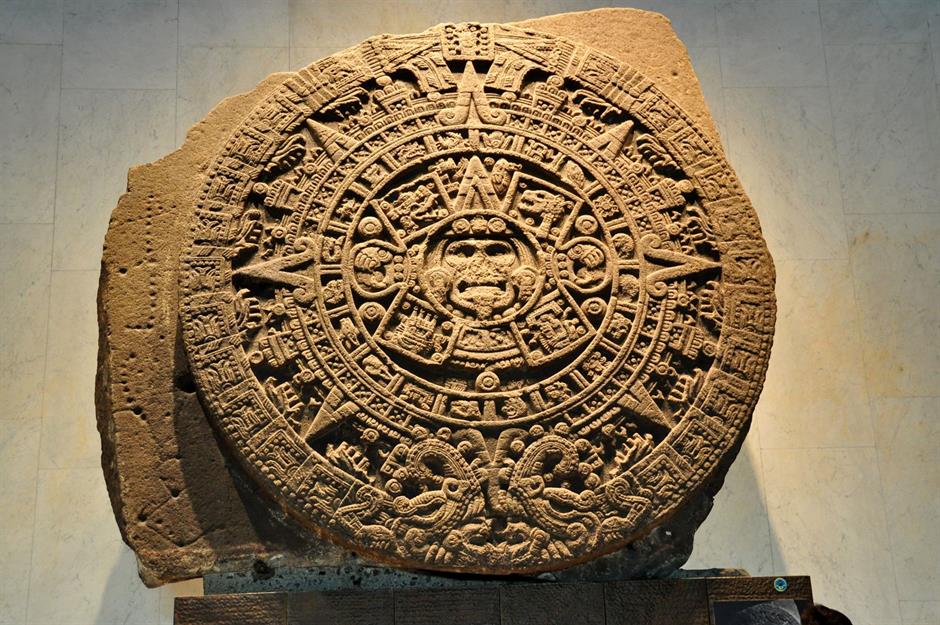
Perhaps the most famous Mesoamerican sculpture, the Aztec Sun Calendar Stone was buried by Spanish conquerors in the 16th century and only found again in 1790. Many researchers think that the 24-tonne basalt stone was used as an altar for human sacrifice, while a study in 2017 interprets the image at the stone's centre as the death of sun god Tonatiuh during an eclipse – an event the Aztecs believed could bring about the end of the world. Researcher Susan Milbrath said the Aztec peoples had a "more foreboding look on their future" than societies today.
Love this? Follow us on Facebook for travel inspiration and more
25: Riace Bronzes, Italy
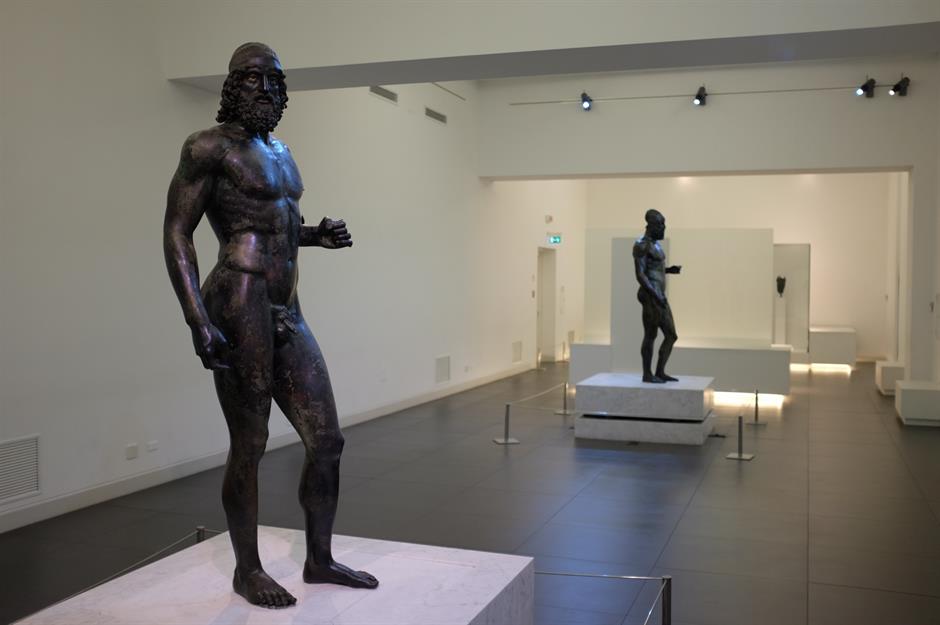
In 1972, Stefano Mariottini was snorkelling off the coast of Riace when he spotted an arm sticking out of the sand. One week later, Italian authorities hauled two 2,500-year-old bronze statues out of the Ionian Sea. The Riace Bronzes depict two ancient Greek warriors and date to between 460 and 430 BC. In 1981 the pair went on display at the National Archaeological Museum of Reggio Calabria, after a substantial restoration. No one knows exactly how the statues made their way to the seafloor, but most experts assume it was via a shipwreck.
24: Staffordshire Hoard, England, UK

Comprising more than 4,000 items, the Staffordshire Hoard is the greatest haul of Anglo-Saxon gold and silver ever found. It’s thought the hoard was buried during the 7th century AD, with its Dark Age craftsmanship proving that Anglo-Saxon goldsmiths were able to use advanced metalwork techniques. The discovery was made by a metal detectorist in an otherwise anonymous field near the English city of Lichfield in 2009. Today the precious items are on display in museums in Birmingham and Stoke-on-Trent.
23: Canaanite comb, Israel
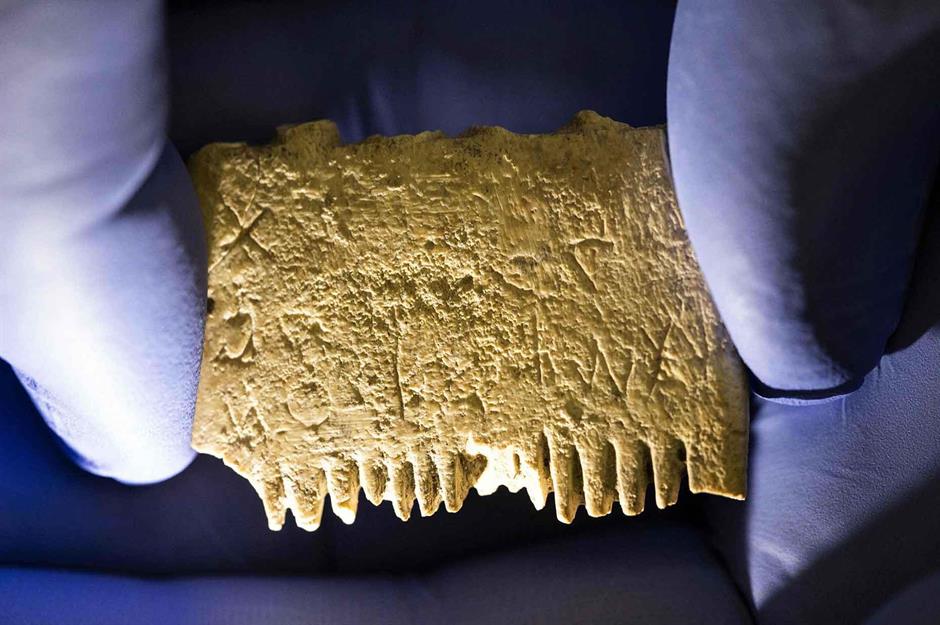
It may be little, but its significance is anything but. This head-lice comb was discovered in 2017 during excavations of Lachish, an ancient Canaanite city state, and likely dates to 1700 BC. But the headline act is the engravings etched into it, which were only spotted in 2021. The text reads: "May this tusk root out the lice of the hair and beard". Archaeologists say this 3.5cm-long tool was a luxury item, as most equivalent combs were made simply from wood or bone.
22: Etruscan and Roman statues, Italy
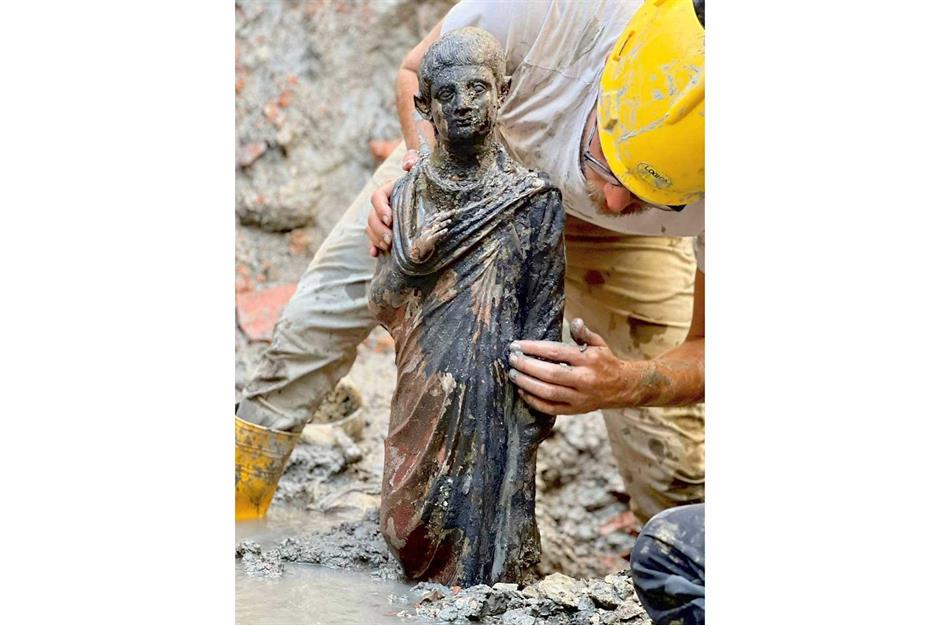
Every now and then, a discovery comes along that completely changes the historical record. In 2022, a haul of 24 Etruscan and Roman statues were unearthed in an ancient sanctuary near the village of San Casciano dei Bagni in Tuscany. Beautifully preserved, despite dating from between the 2nd century BC and the 1st century AD, they depict divine figures and replicas of human organs that had been cast into the sanctuary's waters by pilgrims hoping to be healed. It was the cross-cultural context that excited researchers – the statues show that the Romans and Etruscans lived much more closely than previously thought and even prayed together.
21: Petra, Jordan
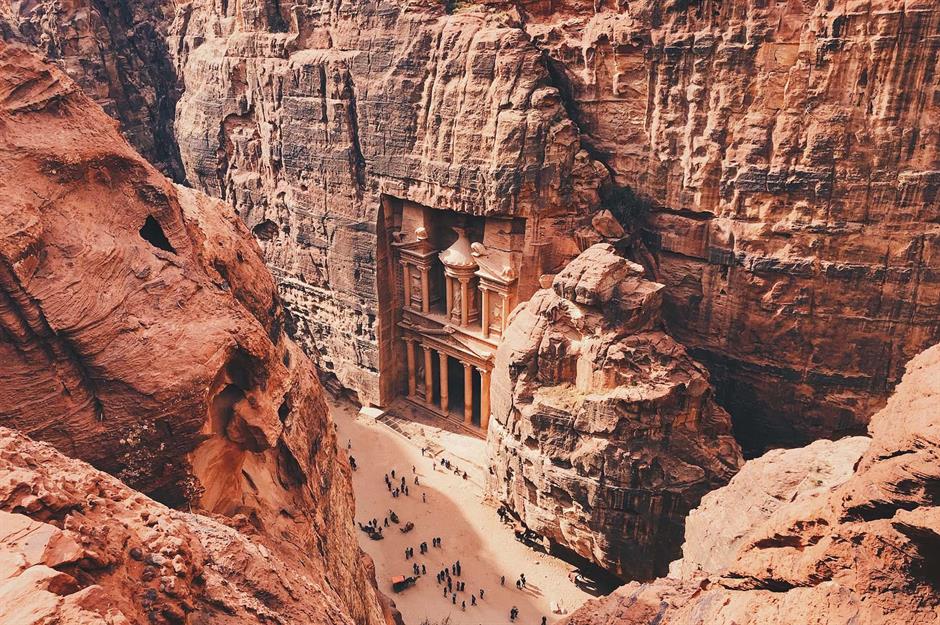
An extraordinary ancient city hewn into the sandstone rocks in the Jordanian desert by the Nabataeans, Petra lay abandoned by the 8th century AD. Then, in 1812, the ruins were rediscovered by Swiss explorer Johann Ludwig Burckhardt. This eventually ignited interest from other western archaeologists, and in 1929 a British team began excavating Petra. Petra is popularly called 'the Rose City' thanks to the rich pastel-red of its cliffs, peaks, facades and buildings.
20: SUE the T Rex, South Dakota, USA

During a commercial excavation trip in South Dakota in 1990, fossil collector Sue Hendrickson discovered the bones of one of the best-preserved Tyrannosaurus rex skeletons ever found. It took six people 17 days to extract all the bones and today SUE is perhaps the most famous fossil on Earth. The skeleton is over 40 feet (12m) long, and experts can account for 250 of the species' 380 known bones. SUE dates to the Cretaceous period – about 67 million years ago – and today is on display at the Field Museum in Chicago, Illinois.
19: Venus de Milo, Milos, Greece

The Venus de Milo is one of the best-preserved ancient Greek statues in existence. It was discovered in 1820 by Yorgos Kentrotas, a farmer who was removing blocks from an ancient wall on the Greek island of Milos. The elegant female figure is thought to depict Aphrodite, the Greek goddess of love, and was probably created by Greek sculptor Alexandros between 150 and 100 BC. French naval officer Olivier Voutier helped dig up the statue before it was sold to the French ambassador, and it’s remained on display at the Louvre Museum in Paris ever since.
18: Terracotta Army, Xi'An, China

In 1974, a group of farmers digging for a well near the western city of Xi'an, China, made a startling discovery. Around 8,000 life-sized clay soldiers and archers, 130 chariots and 520 horses were eventually uncovered, forming the Terracotta Army. The figures – no two the same – guard the tomb of Emperor Qin Shi Huang, who died in 210 BC. The site spans three large pits and attracts millions of tourists each year. The tomb of the emperor himself remains unopened and archaeologists are nervous; an account written a century after his death tells of deadly booby traps including crossbow bolts primed to fire and rivers of mercury.
17: Cheddar Man, England, UK

The oldest complete human skeleton ever found in Britain, 'Cheddar Man' was discovered during drainage improvement works in Gough’s Cave in Cheddar Gorge in 1903. This Mesolithic hunter-gatherer died around 10,000 years ago and was buried alone – an unusual move since communal burials were standard at this time and one of Britain’s largest Mesolithic cemeteries lies nearby. In 2018, scientists measured and scanned his skull to recreate what he looked like (pictured).
These are North America's most amazing archaeological finds from recent times
16: Aten, Luxor, Egypt
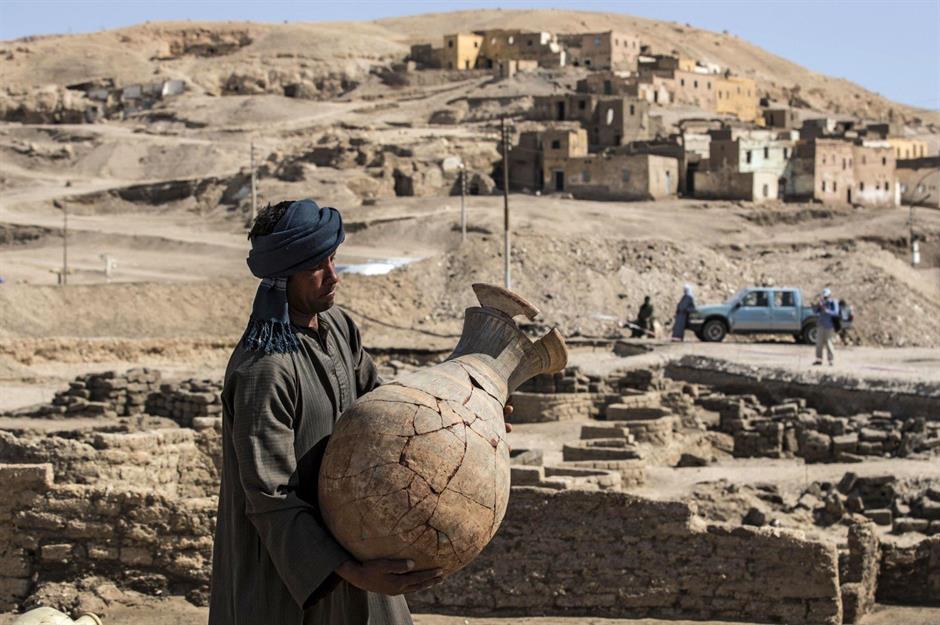
Aten, 'the Lost Golden City', is thought to be the largest ancient city ever uncovered in Egypt. Famed Egyptologist Dr Zahi Hawass led the initial excavations in 2020, and in April 2021 the team announced the discovery of an entire 3,400-year-old city. Despite being buried beneath the sand for thousands of years, Aten was extremely well-preserved, with finds including three palaces, large bakeries, workshops and a cemetery. The city was likely built by Amenhotep III, who ruled roughly between 1390 and 1353 BC. Aten’s significance has been compared to that of Tutankhamun’s tomb.
15: Gobekli Tepe, Turkey

The oldest known temple in the world – and perhaps the oldest building of any kind – Gobekli Tepe dates back to between 9600 and 8200 BC. It was first examined in the 1960s, but its credentials weren't taken seriously until German archaeologist Klaus Schmidt reassessed the site in 1994. Excavations revealed large limestone pillars set in circles alongside other megaliths, some carved with animals. Schmidt describes it as "the first human-built holy place". In October 2023, fresh excavations revealed a painted statue of a wild boar – one of the oldest known statues from the Mesolithic period.
14: King Richard III, England, UK

When the English King Richard III was killed at the Battle of Bosworth in 1485 he was buried at Grey Friars Abbey in the Midlands, but his skeleton was removed in the 1530s and lost for centuries. In one of the great archaeological detective stories of modern times, a team including researcher Philippa Langley became adamant that the king lay beneath the north end of a city council car park in Leicester. In August 2012 excavations began and a skeleton was quickly found – confirmed to be that of the late king in February 2013. In 2015 his remains were interred at nearby Leicester Cathedral.
13: Akrotiri, Santorini, Greece
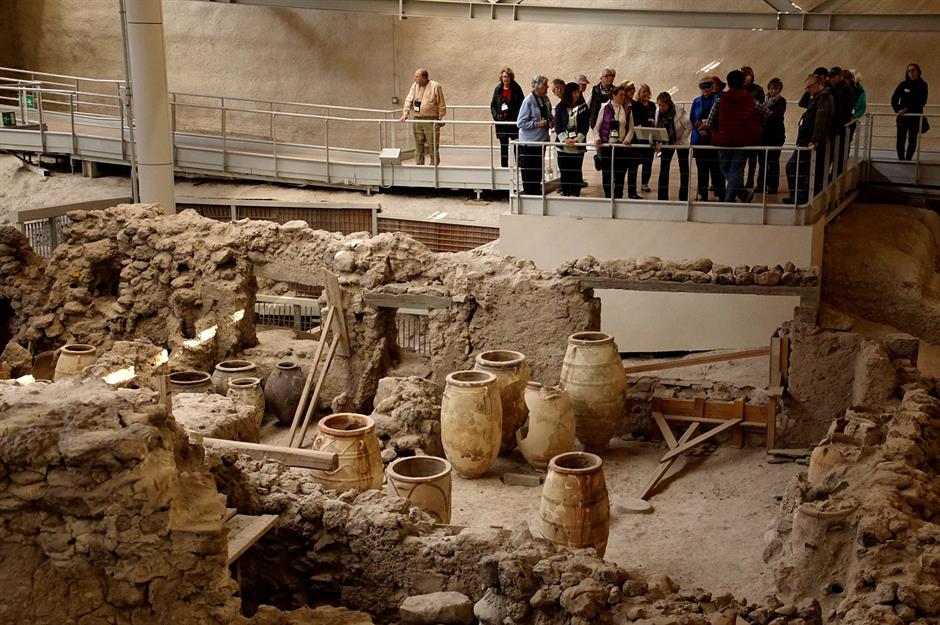
We'll get to Pompeii later, but before there was Pompeii, there was Akrotiri. The Bronze Age Minoan settlement was destroyed by the Eruption of Thera in the 16th century BC, but, just like in Pompeii, the remnants were preserved beneath a thick layer of volcanic ash, suspended in time until archaeologists started digging through the ruins in the 19th century. The earliest excavations took place in 1867 and the first modern excavations got underway exactly a century later, turning up ceramics, ancient furniture and even a charred bed. Today, raised walkways ferry visitors above the town's multi-storey houses, preserved wall paintings and sophisticated drainage system.
12: Mungo Lady and Mungo Man, New South Wales, Australia
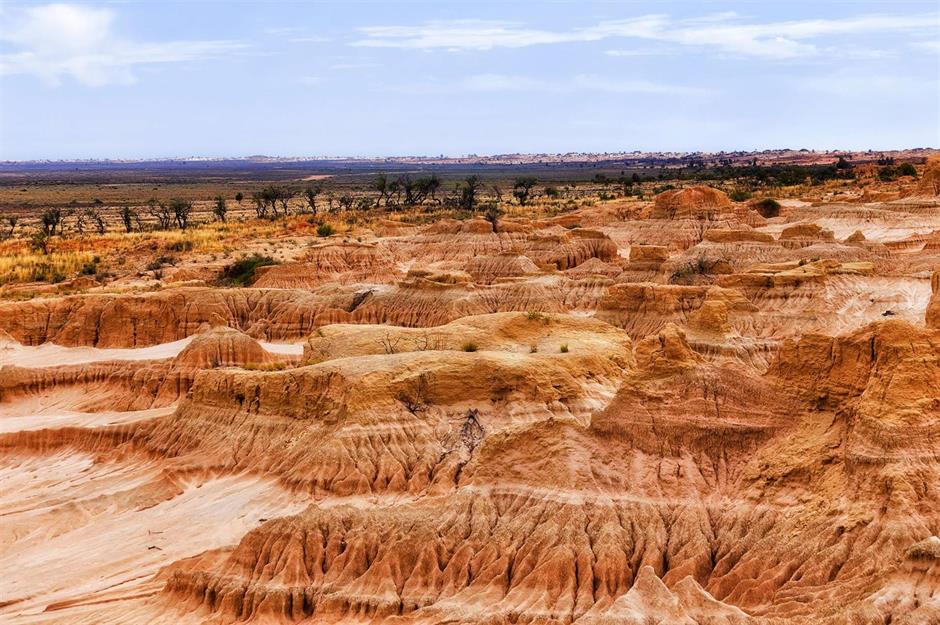
Lake Mungo is home to the oldest human remains in Australia, and some of the oldest in the world. In 1968, geologist Jim Bowler discovered the remains of a woman – 'Mungo Lady' – who lived between 40,000 and 42,000 years ago and had been ritually cremated by her people. The following year, Bowler uncovered 'Mungo Man', a 50-year-old hunter-gatherer from a similar period who had also been ritually laid to rest. He had been laid on his back and sprinkled with red ochre. In 2003, archaeologists made another discovery – 460 ancient footprints which, at 20,000 years old, are some of the oldest in existence.
11: Fossilised Footprints, White Sands National Park, New Mexico, USA
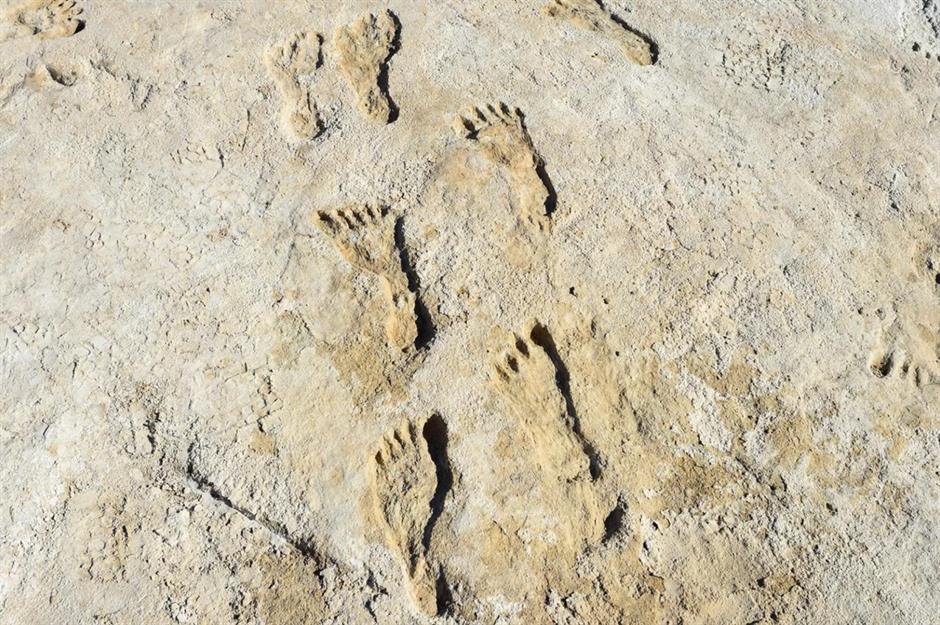
In 2019, fossilised footprints were located around the shores of the ancient (and now evaporated) Lake Otero in White Sands National Park. The size of the footprints indicated they belonged to children and teenagers. Previously, it was understood that humans arrived in North America between 13,500 and 16,000 years ago, but in September 2021 new research dated the ancient footprints to between 21,000 and 23,000 BC. This recent update could completely rewrite the history of human settlement in the Americas.
10: Palace of Knossos, Crete, Greece
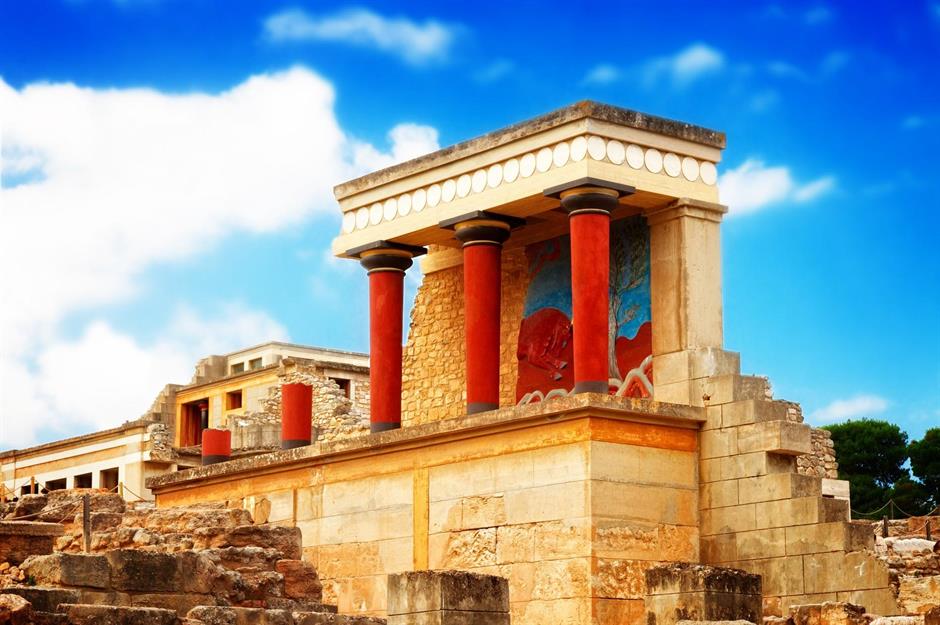
The centre of the Minoan world, this discovery pulled back the covers on not only a palace but an entire civilisation. First examined in the late-19th century, this elaborate complex was the royal residence of the legendary King Minos (of Theseus and the Minotaur fame) and was built from around 1900 BC. Greek archaeologist Minos Kalokairinos first excavated the site in 1878, but it was British archaeologist Sir Arthur Evans who swept in and helmed the main excavations from 1900 onwards. The excavations drastically changed our understanding of the Minoan Bronze Age civilisation on this archaeologically bountiful Greek island.
9: Rosetta Stone, Egypt
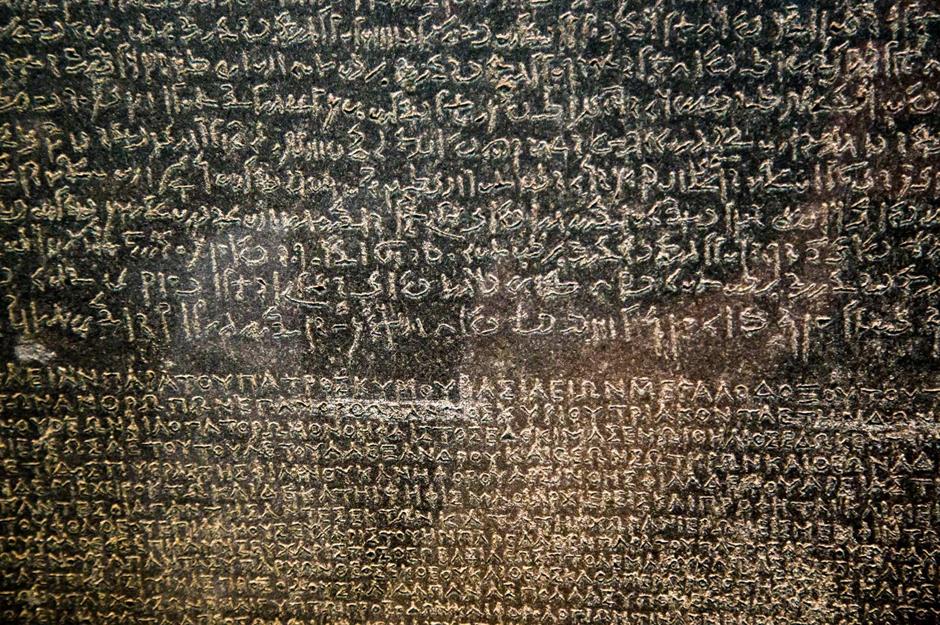
The Rosetta Stone – one of the world’s most famous ancient artefacts – was discovered by accident. In 1799, French soldiers were building new defences during their invasion of Egypt and robbed stone from a nearby ancient structure. One intriguing-looking slab was spared, a piece of black basalt that bore the same inscription in three different languages: hieroglyphics, demotic and ancient Greek. After the French were defeated, the stone was transferred to the British and was displayed in the British Museum in 1802. In 1822, hieroglyphic writing was finally deciphered – thanks in no small part to the stone – forever changing our understanding of ancient Egyptian life.
8: Dead Sea Scrolls, West Bank

The Dead Sea Scrolls are among the most significant archaeological finds of the 20th century. In 1946, a teenage shepherd ventured into a cliffside opening on the northwestern shores of the Dead Sea in what is now the West Bank, only to find several jars filled with papyrus and parchment scrolls. Further excavations revealed more scrolls scattered across 11 more caves, at a site now known as Khirbet Qumran. The scrolls, written in Hebrew, Aramaic and Greek between the 3rd century BC and the 1st century AD, are among the oldest biblical manuscripts ever found.
7: Skara Brae, Scotland, UK
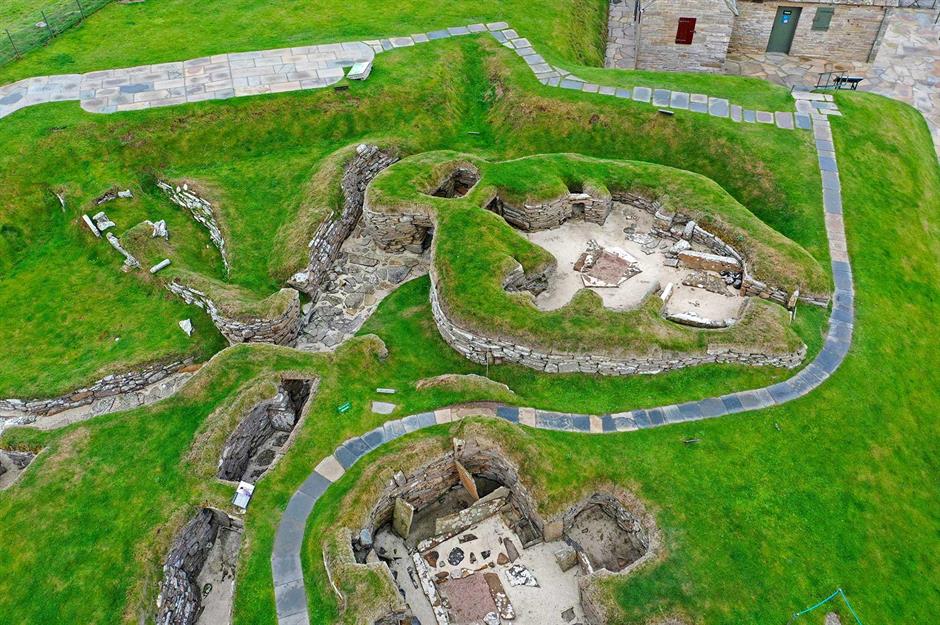
Located on the remote Orkney Islands off the north tip of Scotland, Skara Brae is one of the best-preserved Neolithic sites in northern Europe. The 5,000-year-old village remained buried underground until a heavy storm in 1850 finally exposed it. The main excavations took place between 1927 and 1930 when it was dated to the Iron Age, but it wasn’t until the 1970s – and the advent of radiocarbon dating – that experts dated its construction to 3180 BC. That's older than Stonehenge and the Great Pyramid of Giza. To the south of Skara Brae lies another huge mound, which some believe could hide a similar prehistoric settlement.
6: Nazca Lines, Peru
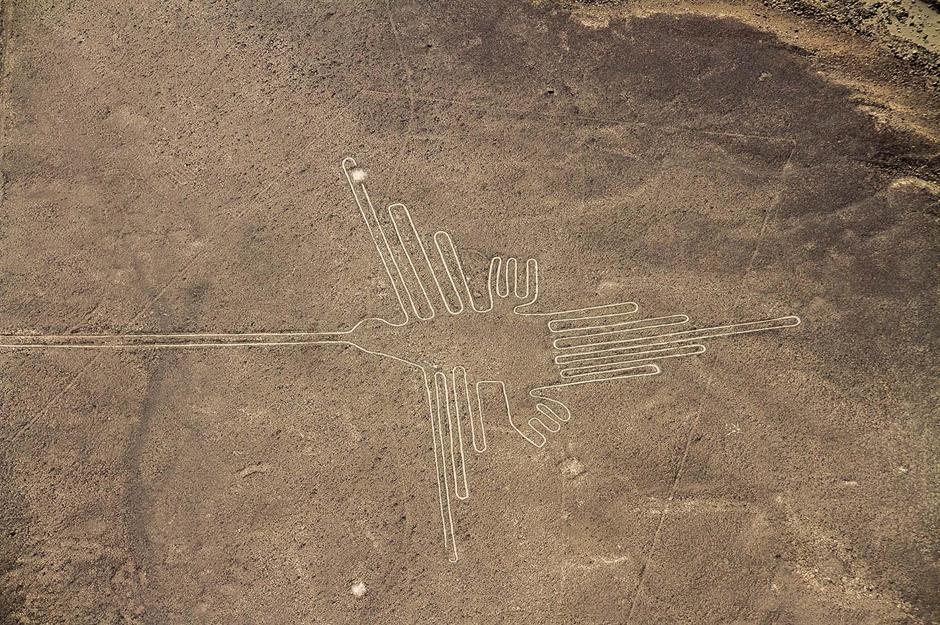
The ancient Nazca people etched these giant geoglyphs into the sands of the southern Peruvian desert between 500 BC and AD 500. There are more than 300 figures in a range of shapes, from spiders to hummingbirds, and their meaning is still debated. The Nazca Lines were first studied in the 1920s, but only gained real attention when pilots flew over them in the 1930s. Thanks to advances in technology, research in 2023 used AI to highlight several previously unknown geoglyphs.
5: Machu Picchu, Peru
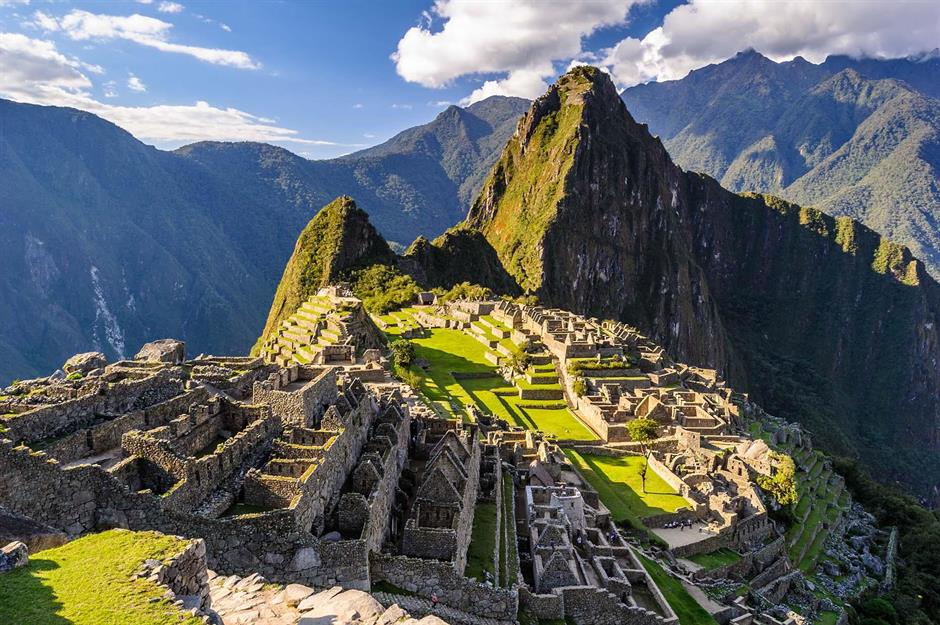
The story of Machu Picchu’s discovery is almost as incredible as the site itself. In 1911, university professor Hiram Bingham was in search of the lost city of Vilcabamba, but as he ascended a Peruvian mountain ridge he came across Machu Picchu instead. The abandoned Incan city was covered in vegetation and was initially described by Bingham as "a great flight of beautifully constructed stone terraces". Excavations soon commenced and today it is one of Peru's (and the world's) best-loved tourist attractions.
4: Lascaux Cave, France
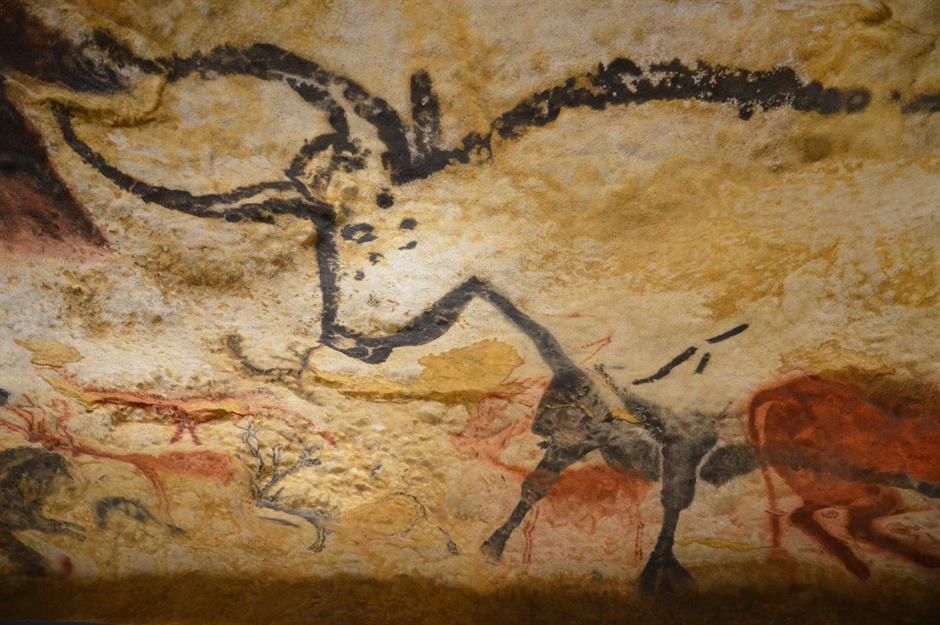
Lascaux Cave is home to prehistoric artworks created by humans around 17,000 years ago. The underground cavern was accidentally located by four teenagers in 1940 after their dog investigated the entrance. Further exploration revealed 600 painted and drawn animals and symbols, plus up to 1,500 engravings. In 2023, an amateur archaeologist found that some of the paintings make up a lunar calendar by tracking the mating cycles of certain animals. The caves have been closed to the public since the 1960s for their own protection, though an intricately crafted replica of the artworks is visitable nearby.
3: Sutton Hoo, England, UK

In the 1930s, Edith Pretty started investigating 18 strange mounds in the land of her Sutton Hoo estate, and enlisted the help of local amateur archaeologist Basil Brown. Beneath the largest mound they uncovered a burial chamber containing a gigantic ship and a host of 7th-century Anglo-Saxon objects. The finds are now considered to be the ship burial of King Raedwald of East Anglia and are described by the National Trust as "one of the greatest archaeological discoveries of all time". The hoard is now on display at the British Museum, including the famous Sutton Hoo helmet – one of just four Anglo-Saxon helmets to survive the period.
2: Pompeii, Italy
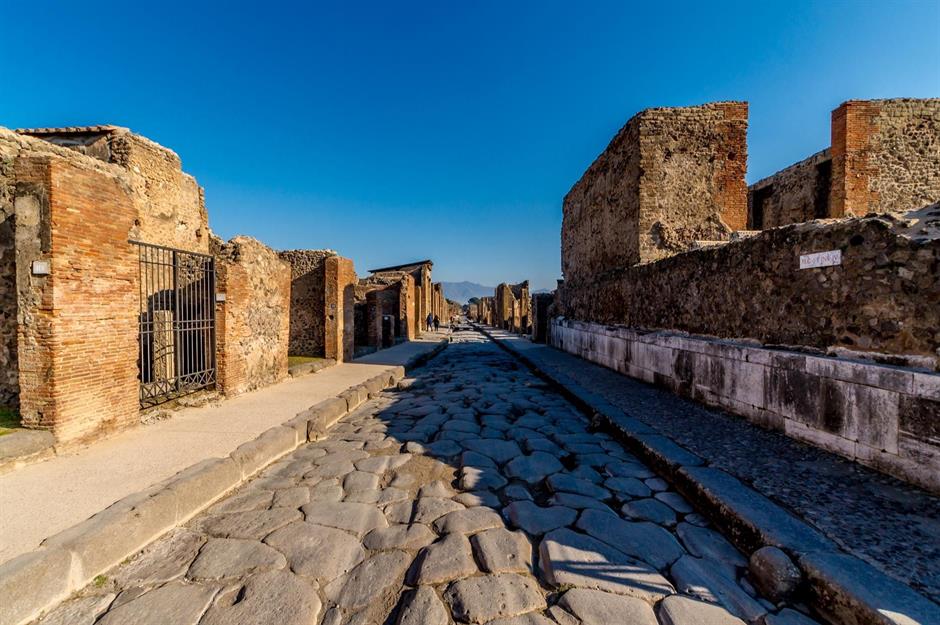
Pompeii, an ancient Roman port city, was devastated by the eruption of Mount Vesuvius in AD 79. In 1748 a group of explorers unearthed remnants of the lost city, preserved beneath layers of volcanic ash. More was uncovered in the 1800s: a huge amphitheatre, a forum, fine villas, ordinary houses, shops, brothels and more. Today, the discoveries are still pouring in – in April 2024 new frescoes were unveiled depicting heroes from the Trojan War. There's still much more to be discovered, as a third of Pompeii remains unexcavated.
1: Tutankhamun's tomb, Luxor, Egypt
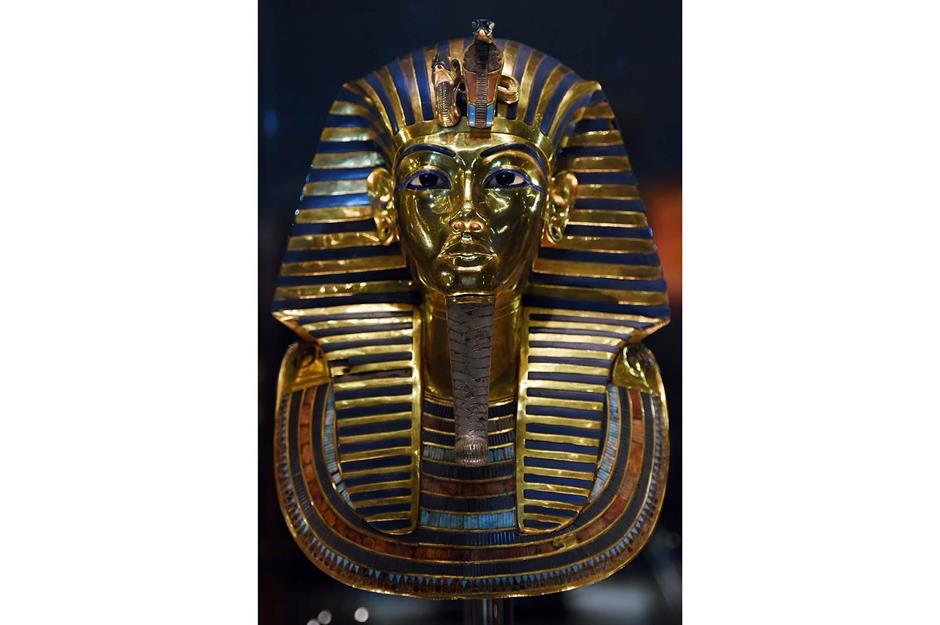
Tutankhamun’s tomb contained some of ancient Egypt's most astonishing relics, including a golden chariot, a golden throne and the pharaoh's ornate death mask (pictured). The boy-king’s tomb was unearthed by British Egyptologist Howard Carter in 1922 – an extremely high-profile discovery that made front pages across the globe. Modern technology has helped us learn more about Tut’s life – he had a broken left leg that became infected and he had malaria. As for the tomb, some experts believe that an Egyptian queen remains hidden in a burial chamber...
Now discover the most incredible archaeological discoveries uncovered recently
Comments
Be the first to comment
Do you want to comment on this article? You need to be signed in for this feature